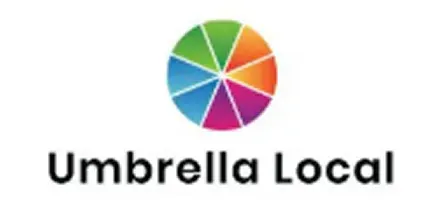Mobile App Design: A Comprehensive Guide For Mobile App Design
Published On
May 16, 2022
Mobile App Design is part of our daily lives. Whether you’re commuting, waiting for a friend, or just killing time, there are plenty of opportunities to download and use mobile apps. According to recent statistics, the average person spends almost two hours on their mobile device every day; that number is even higher among Millennials and Gen Z.
Given this rapid growth and adoption of mobile apps, it’s no wonder so many businesses have made them a central part of their marketing strategy. Here’s everything you need to know about mobile app development and design, including why you should create them, what makes for a good app design, and how to start creating yours for a great user experience (UX).
What Is A Mobile App Design?
In a nutshell, mobile apps usually used to interact with the user and provide them with some sort of service or information. Mobile app design is the process of creating a user interface (UI) for your app. The UI includes everything from the basic layout to color schemes, icons, and fonts. It’s the first thing anyone sees when they download your app, so it needs to be appealing and intuitive. It is also related to mobile app development in terms of the overall process, but the development phase is more about the coding of the app and how it functions rather than what it looks like.
Why Design Mobile Apps?
Mobile apps are a great way to engage with your audience and provide them with information and services. If you have an e-commerce store, for example, you can create an app that allows users to purchase products directly from their phones. Many businesses also use mobile apps to reach out to consumers who aren’t ready to buy just yet. By creating an app that engages with users, you allow them to browse your inventory on the go and make purchases whenever they’re ready.
What Makes A Good Mobile App?
The main goal of designing a mobile app is to make it easy for the user to navigate and use. To achieve this, the designer must consider several key factors.
One-Touch Navigation:
Your app should designed in such a way that it can easily accessed from the home screen of a mobile device and used with just one touch of a button. The user should also be able to use your app without having to go through any extra steps, like filling out forms or clicking through multiple menus.
Consistency:
Your app’s design should be consistent with the rest of your brand’s branding elements, such as colors and fonts so that users know they are interacting with an authentic part of your business. This will also help build trust and familiarity with your brand over time.
User-Friendly Interface:
An intuitive interface makes it easy for the user to navigate by offering clear visual cues about how to use the app. It should be as simple as possible for the user to find what they are looking for, and easy to access it once it is found.
Responsiveness:
Your app should be able to respond quickly and easily to a user’s touch. The interface should be smooth and responsive so that users can easily move through your app and interact with the content with minimal delay or lag time.
Mobile-Optimized:
This means that your app is designed specifically for mobile devices and will work on all kinds of different mobile devices, including smartphones, tablets, laptops, etc. It should also be responsive enough so that it will look great on all different kinds of screens, including small phone screens as well as larger tablet screens.
Most Important Part
Easy To Use:
To help users navigate your app, you need to make sure that it is easy for them to use by providing visual cues about how things work within the interface in a way that is intuitive to the user.
Clean and Crisp:
Your app should be clean, simple, and clear to give users a good experience. It should not cluttered with information and unnecessary graphics or images, nor should it have any visual noise that could distract the user from what they are trying to do when using your app.
Use of Colors:
Your app also needs to use colours that are easy on the eyes, especially if you want users to be able to look at it for long periods without getting eye strain or having their eyes tired of looking at it, which can make it hard for them to concentrate on what they are doing within the app itself.
Easy To Read:
Because your app will likely be used for a variety of different purposes, it needs to be easy to read and understand, so that users can easily figure out how to use it and where things locate within the app.
User-Friendly:
To help users get the most out of your app, you need to make sure that it is user-friendly and easy for them to navigate through. It should be self-explanatory in terms of how things are done within the app and should not require extensive training for users to figure out how they work or what they do.
How To Design A Mobile App?
Designing a mobile app can be a very tricky thing to do, especially if you are not aware of all the things that you need to do for the app to look good and function properly. This is why it’s important to take the time to understand mobile app design, allowing you to create an app with the help of a mobile app design company that looks great and functions effectively. Here are the five steps in the mobile app design process:
Research
Before designing anything for your mobile app, you need to research to determine who your target audience is and what they expect from your product. This will help you to create a user experience that meets their needs while also providing the best possible mobile app for them.
Prototyping
Once you’ve conducted the necessary research, it’s time to build a prototype of your app so that you can test it with users and get their feedback on how well it works. The prototype must accurately represent how the final product will look, feel, and function upon release.
Testing
Once you’ve built a prototype, you need to test it to make sure that it functions properly and is easy to use. This is also the time when you can ask users for feedback on whether or not they like the app and what they would change if they could.
Development
After testing your app with a few people, there may be some changes. That must be completed before starting the development process. However, much of the work is already complete, allowing for close monitoring during development. To make sure everything is on track and running smoothly.
Release
You Can Get Help from The Best Mobile App Design Company
Do you want to experience outstanding mobile app designing services for your business? If that’s the case, then 99GraphicsDesign is your best bet. Work with the top mobile app development and mobile app design company that has years of experience helping businesses just like yours create amazing apps. They have experts who’ll understand your specific business needs and design an app that meets them perfectly.
Ready for
Digital Transformation?














